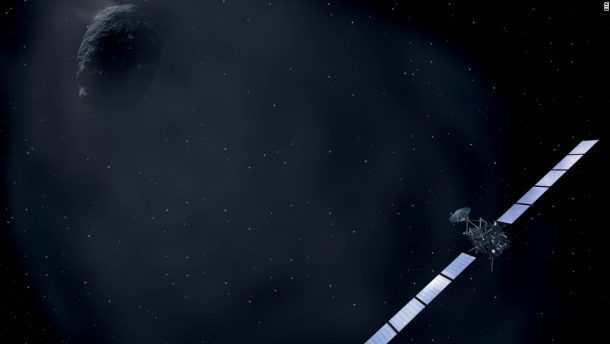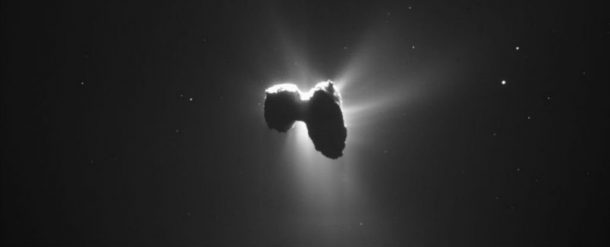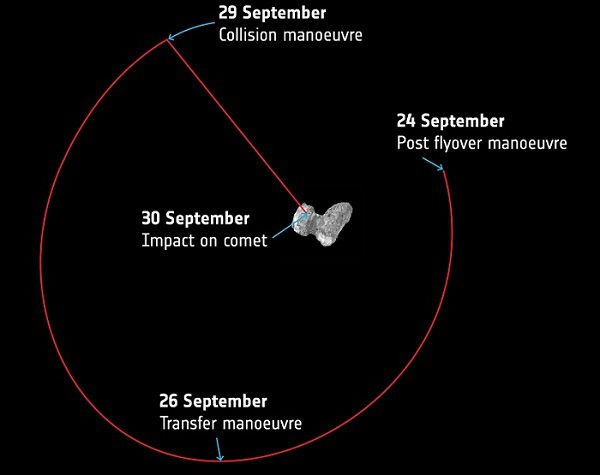Philae lander and its partner Rosetta have had their fair share of fame and glory since they caught up with the 18 km per second (40,000mph) comet 67P and have given incredible data to the scientists.
The three-tonne Rosetta orbiter with the Philae lander on board was launched back in 2004 from Earth. It then travelled a mammoth 6.4 billion kilometres through the Solar System before touching the Comet 67P/Churyumov–Gerasimenko on 6 August 2014 successfully.
The mission has revealed some of the most treasured and important information known to man till date, with Rosetta sending most detailed shots of a comet ever, and the Philae lander discovering organic molecules on the surface, which hint a possibility of life. But then in an unexpected turn of events, Philae ran out of battery several days earlier than expected, and soon lost connection to the base station on Earth.

It seemed as though the euphoria 0f a new mission has ended, but Rosetta again made it into headlines when it found Philae lander stuck under a boulder last month.
But now finally after the roller coaster emotional ride, it is time to say goodbye to Rosetta, as ESA plans to slam it into the comet.
According to ESA, Rosetta will begin its final decent this Thursday September 29, at 4:50pm Eastern Standard Time. The controlled descent will be for 19 km to its final resting place on comet 67P, called Ma’at, named after the ancient Egyptian goddess of harmony, balance, and order.
I heard you wanted some new #CometLanding mission-themed avatars & headers for your #SocMed profiles! Choose here: https://t.co/P8ow4vXolx pic.twitter.com/zYN9WzCjZI
— ESA Rosetta Mission (@ESA_Rosetta) September 28, 2016
“Littered with goosebump-like boulders and deep, treacherous sinkholes, Ma’at is a rugged and inhospitable place, prone to violent outbursts of gas and dust. But the very same features that give Rosetta’s landing pad a frightening appearance also make it a scientific gold mine. In fact, it’s possible this spot could hold the key to understanding how comets form.” says Stone, part of the NSA team on this mission.
But there are chances that like Philae, Rosetta too will move uncontrollably near the comet and crash into a ditch or a massive pit on the surface of the comet.

And since it will be getting close enough to the comet’s surface, Rosetta’s final hours are expected to reveal and collect some of the best data yet. Since Rosetta still has enough power to run for at least another month, it will be used to switch on all kinds of devices and sensors to snap close-up pics, and take measurements of variables like surface temperature, dust density, solar winds, and gravity field etc.
Rosetta mission scientist Laurence O’Rourke says, “We’re literally diving into the unknown, entering a new zone for science.”
You can watch the live streaming of the crash here:
http://livestream.com/ESA/rosettagrandfinale
Rosetta’s controlled descent towards the comet will begin on Thursday September 29, 4:50pm EST (September 30, 6:50am AEST). Commentary and Q&A session will also be available from 8:30am – 12:30am EST. On Friday September 30, 3:55am – 4:05am EST (September 30, 5:55pm – 6:05am AEST) mission control on Earth will work out the way to crash the spacecraft into its landing spot. On from 6:30am – 7:40am EST (September 30, 8:30pm – 9:40pm AEST), approximately, the crashing will finally be achieved.
Here’s the plan of the crash:

Don’t forget to tune in!


